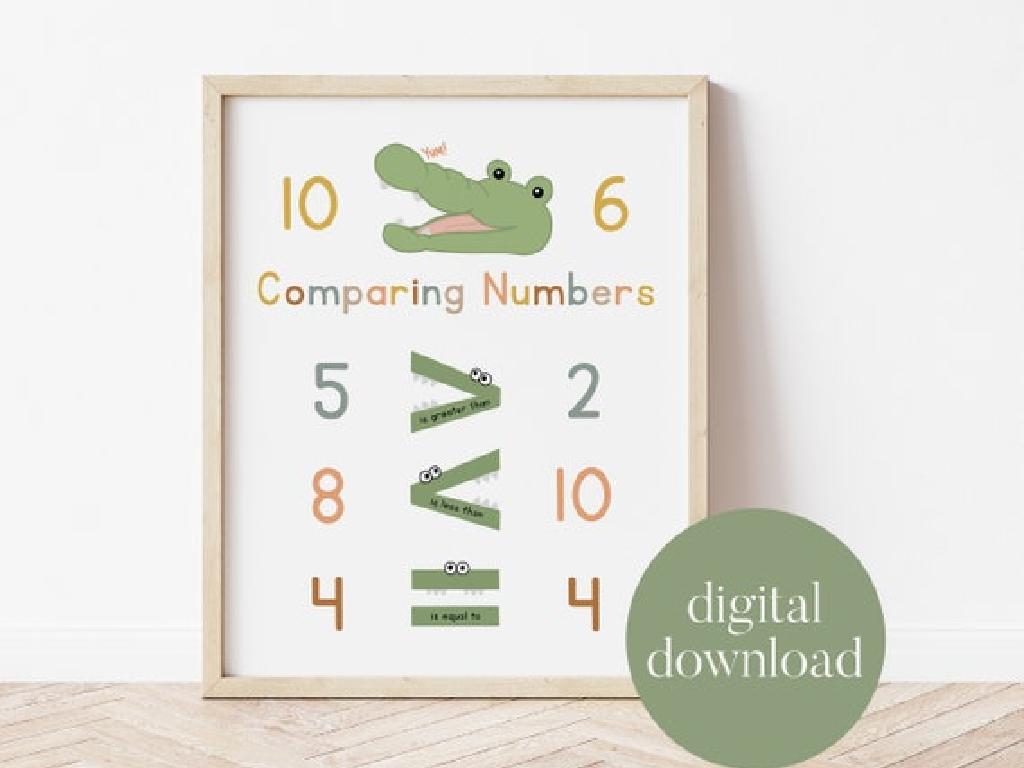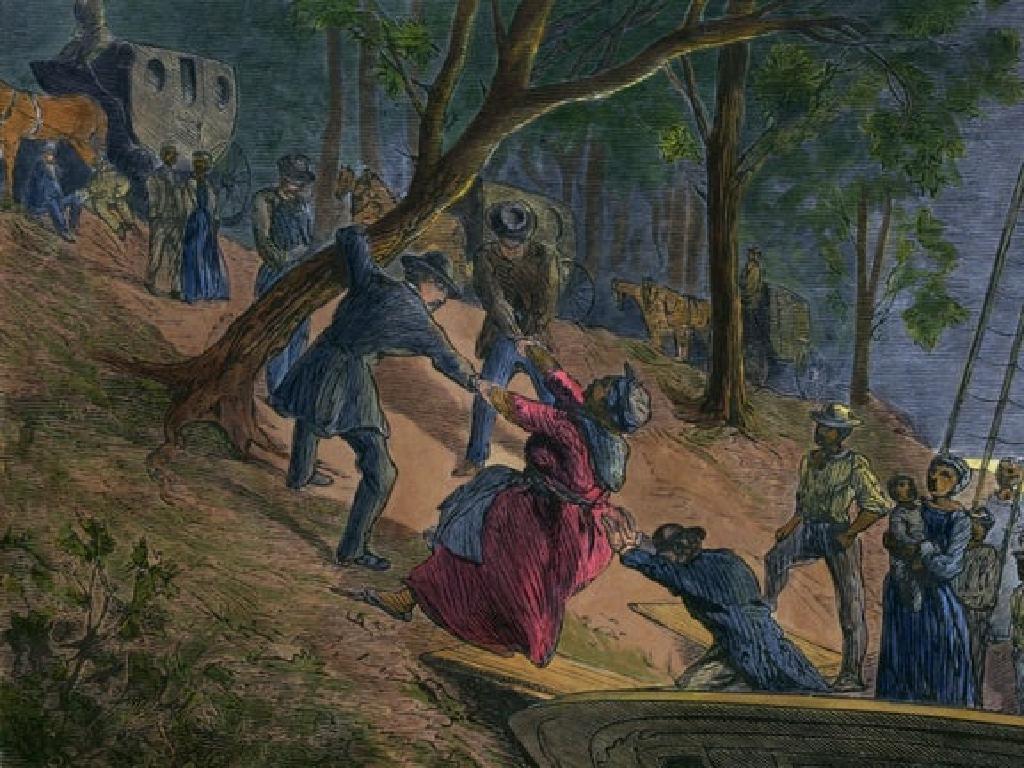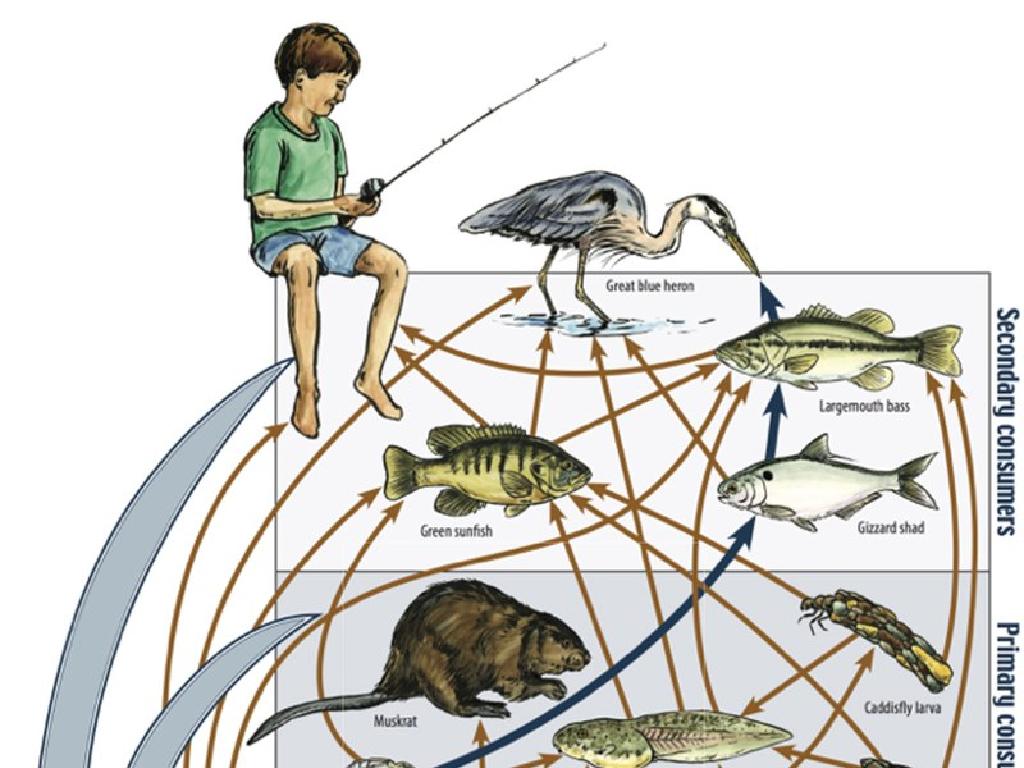Mixed Customary Units
Subject: Math
Grade: Eighth grade
Topic: Units Of Measurement
Please LOG IN to download the presentation. Access is available to registered users only.
View More Content
Introduction to Mixed Customary Units
– Understand customary units
– Units like inches, feet, yards, and miles for length
– Purpose of various units
– Different units measure different scales efficiently
– Everyday measurement examples
– Measuring height, distance, or ingredients for a recipe
– Converting between units
– How to change from gallons to quarts or inches to feet
|
This slide introduces students to the concept of mixed customary units, which are used in the United States for various measurements. Emphasize the importance of understanding these units, as they are part of everyday life, from cooking to measuring height and distances. Discuss why different units exist, highlighting how they serve to measure items of different scales more conveniently. Provide relatable examples such as using teaspoons for small quantities in recipes and yards for measuring football fields. Teach students basic conversion techniques between units, which is a critical skill for solving real-world problems. Encourage students to think of other everyday examples and how they would measure them.
Customary Units of Length
– Understand inches, feet, yards, miles
– Smallest to largest: inch, foot, yard, mile
– Converting between length units
– Use conversion factors: 12 inches in a foot, 3 feet in a yard, 1760 yards in a mile
– Real-life measurement examples
– Measuring height, distance between cities, or length of a room
– Practice with conversion problems
|
This slide introduces students to the customary units of length commonly used in the United States, including inches, feet, yards, and miles. Emphasize the hierarchical relationship between the units and the importance of memorizing the conversion factors. Provide real-life examples to illustrate how these measurements are used in everyday life, such as measuring the height of a person, the distance between two locations, or the dimensions of a space. Encourage students to solve conversion problems to reinforce their understanding and ensure they can apply the concepts to practical situations.
Customary Units of Weight
– Explore ounces, pounds, tons
– Smallest to largest: ounces < pounds < tons
– Measuring weight in daily life
– Use scales for groceries or personal weight
– Conversion between weight units
– Use multiplication or division for conversion
– Practice with real-world examples
– Convert grocery weights or personal weight
|
This slide introduces students to the customary units of weight commonly used in the United States: ounces, pounds, and tons. It’s crucial to help students understand the relationship between these units and their application in everyday life, such as weighing food or measuring personal body weight. Emphasize the importance of being able to convert between these units, as this skill is frequently used in various real-world scenarios. Provide students with conversion factors and guide them through several examples, ensuring they grasp the concept of when to multiply and when to divide during conversion. Encourage students to bring examples from their experiences, such as weights of common household items, and convert them in class for practice.
Customary Units of Capacity
– Understanding cups, pints, quarts, gallons
– Smallest to largest: cup, pint, quart, gallon
– Measuring liquids with these units
– Use appropriate unit for volume of liquid
– Conversion tricks for capacity
– Remember: 2 cups in a pint, 2 pints in a quart, 4 quarts in a gallon
– Practice problems for mastery
– Convert between units and solve real-world examples
|
This slide introduces students to the customary units of capacity commonly used in the United States for measuring liquids. Start by explaining each unit from smallest to largest, ensuring students understand the hierarchy. Emphasize the importance of choosing the right unit based on the volume of liquid being measured. Teach handy conversion tricks, such as the number of cups in a pint, pints in a quart, and quarts in a gallon, to simplify the process. Provide practice problems that involve real-world scenarios to help students apply what they’ve learned and gain confidence in converting between units.
Working with Mixed Units
– Understanding the usefulness of mixed units
– Mixed units can provide more precise measurements in everyday situations.
– Adding and subtracting mixed units
– Align units, convert if necessary, and perform arithmetic operations.
– Practice with mixed unit problems
– Solve practice problems to gain confidence in using mixed units.
– Real-world application of mixed units
– Use mixed units for cooking, construction, and other practical tasks.
|
This slide introduces the concept of mixed units and their practicality in real-world scenarios. Students will learn why mixed units are often more useful than single units, especially for providing precise measurements. The slide will guide students through the steps of adding and subtracting mixed units, which involves aligning the units correctly and converting them if necessary before performing the arithmetic. To reinforce the concept, students will work through practice problems involving mixed units. Emphasize the importance of mastering this skill by discussing its applications in everyday life, such as cooking, where recipes may require measurements in different units, or in construction, where inches and feet are commonly used together. Encourage students to think of other examples where mixed units are used and to share their thoughts in the next class.
Mastering Conversion Techniques
– Utilize conversion factors
– Conversion factors are ratios that express how many of one unit equals another, e.g., 1 inch = 2.54 cm.
– Apply multiplication & division
– Use multiplication to convert to a larger unit, division for a smaller unit.
– Solve real-world problems
– Apply these techniques to convert units in practical situations like recipes or construction.
– Practice with examples
|
This slide aims to equip students with the necessary skills to handle mixed customary unit conversions. Emphasize the importance of conversion factors and how they serve as the foundation for changing one unit to another. Demonstrate the use of multiplication when converting to a larger unit and division for a smaller unit. Provide a variety of real-world problems that require unit conversions to solidify their understanding. Encourage students to practice with examples and to check their work for accuracy. This will prepare them for more complex problems and ensure they are comfortable with the concept of unit conversion.
Class Activity: Measurement Conversion
– Break into small groups
– Measure & convert object sets
– Use rulers, scales for measurement. Convert inches to feet, ounces to pounds, etc.
– Record your group’s findings
– Write down measurements & conversions
– Share results with the class
|
This activity is designed to provide hands-on experience with measurement conversion. Divide the class into small groups and distribute various objects for them to measure. Provide tools like rulers and scales. Each group should measure the length, weight, or volume of their objects using customary units (inches, feet, ounces, pounds, etc.) and then convert these measurements into different units. Encourage students to double-check their work for accuracy. After completing the measurements and conversions, each group will present their findings to the class, fostering a collaborative learning environment. Possible activities: Group A measures lengths of strings and converts inches to feet, Group B weighs fruits and converts ounces to pounds, Group C measures liquid in cups and converts to pints.
Real-World Application of Mixed Customary Units
– Cooking with mixed units
– Recipes often use ounces, cups, and tablespoons.
– Construction measurements
– Builders use feet, inches for accuracy.
– Athletics: tracking performance
– Athletes use yards, miles to measure distance.
– Understanding unit conversion
|
This slide aims to show students how mixed customary units are used in everyday life, emphasizing the importance of understanding and converting between these units. In cooking, precise measurements of volume and weight are crucial for the desired outcome. In construction, accuracy in length measurements ensures structural integrity. Sports often involve distances measured in various units, which athletes need to understand and compare. Highlight the need for unit conversion skills in these contexts and encourage students to practice by relating to these familiar scenarios. Provide examples such as converting a recipe’s measurements into a single unit or calculating the total inches in a construction project.
Quiz Time: Mastering Unit Conversions
– Take the individual conversion quiz
– Apply conversions to real-world scenarios
– How would you convert gallons to quarts in a recipe?
– Class review of quiz answers
– Understand practical applications
– Grasping these concepts is crucial for everyday problem-solving.
|
This slide introduces a quiz designed to test the students’ understanding of mixed customary unit conversions. The quiz should include a variety of problems that require students to convert between different units, such as inches to feet, gallons to quarts, or pounds to ounces. After the quiz, the class will review the answers together, allowing students to understand common mistakes and learn from each other. Emphasize the importance of these skills in real-world situations, such as cooking, construction, and science. Provide examples during the review to illustrate how these conversions are used in daily life. This activity aims to reinforce their learning and demonstrate the practicality of math in everyday contexts.
Conclusion: Mastery of Mixed Customary Units
– Recap: Mixed Customary Units
– Reviewed how to combine and convert units like inches and feet
– Importance of precise measurements
– Accurate measurement is crucial in various real-life applications
– Homework: Conversion worksheet
– Complete the provided worksheet to practice unit conversions
– Prepare for next class discussion
|
As we wrap up today’s lesson on Mixed Customary Units, it’s important to emphasize the key concepts we’ve covered, including how to effectively combine and convert between units such as inches, feet, yards, and miles. Stress the importance of accurate measurement in real-world scenarios, such as construction, cooking, and science. Assign the practice worksheet on conversions for homework to reinforce today’s lesson and check for understanding. In the next class, be prepared to discuss any challenges faced during the homework to ensure a solid grasp of the concepts.






